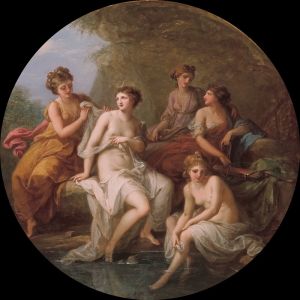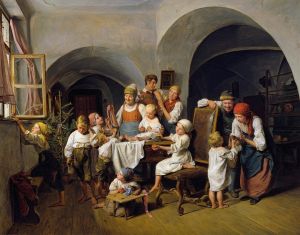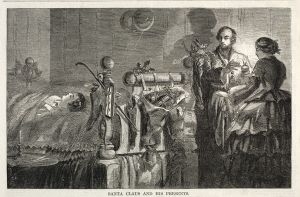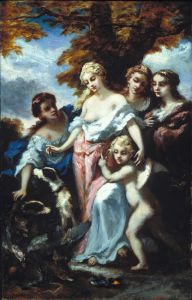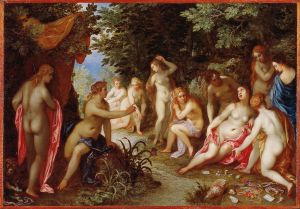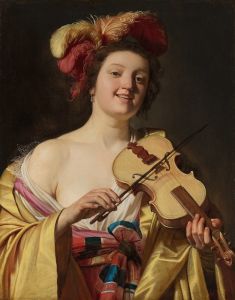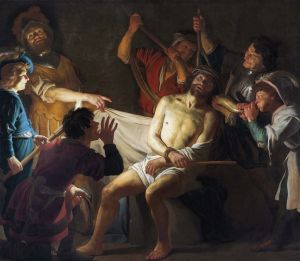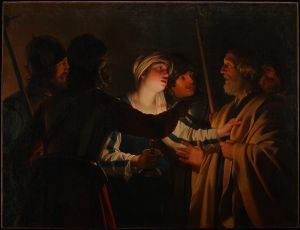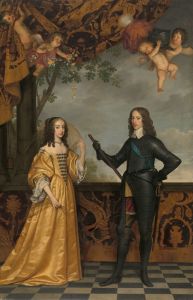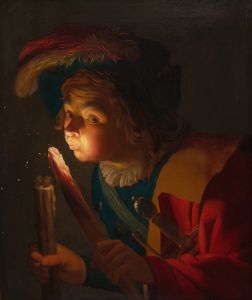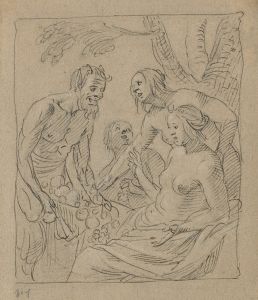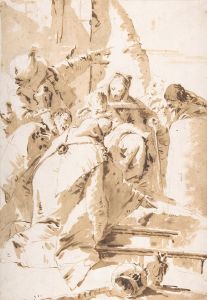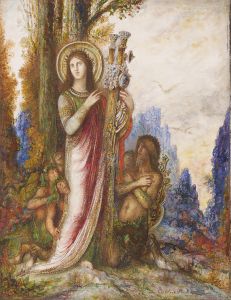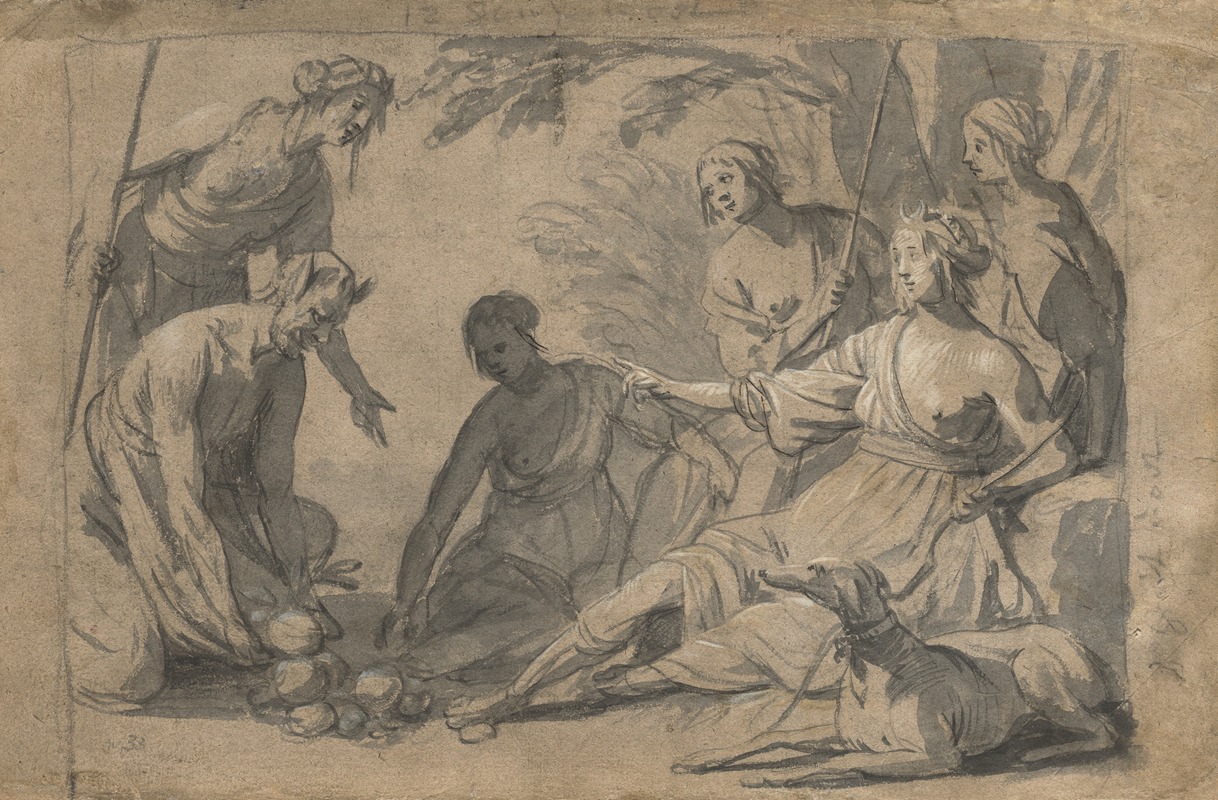
Diana and Four Nymphs Receiving Gifts from a Satyr
A hand-painted replica of Gerard van Honthorst’s masterpiece Diana and Four Nymphs Receiving Gifts from a Satyr, meticulously crafted by professional artists to capture the true essence of the original. Each piece is created with museum-quality canvas and rare mineral pigments, carefully painted by experienced artists with delicate brushstrokes and rich, layered colors to perfectly recreate the texture of the original artwork. Unlike machine-printed reproductions, this hand-painted version brings the painting to life, infused with the artist’s emotions and skill in every stroke. Whether for personal collection or home decoration, it instantly elevates the artistic atmosphere of any space.
Gerard van Honthorst, a prominent Dutch Golden Age painter, is renowned for his mastery of chiaroscuro and his ability to depict lively, dramatic scenes. One of his notable works is "Diana and Four Nymphs Receiving Gifts from a Satyr," which exemplifies his skill in capturing mythological themes with a vivid sense of realism and theatricality.
"Diana and Four Nymphs Receiving Gifts from a Satyr" is an oil painting that showcases Honthorst's adeptness at blending classical mythology with the Baroque style's dynamic compositions and dramatic lighting. The painting depicts the Roman goddess Diana, known for her association with the hunt and the moon, accompanied by four nymphs. These figures are receiving gifts from a satyr, a creature from classical mythology often associated with Dionysian revelry and known for its half-human, half-goat appearance.
In the composition, Diana is typically portrayed as the central figure, exuding an aura of grace and authority. The nymphs, her loyal companions, are depicted with a sense of movement and interaction, enhancing the narrative quality of the scene. The satyr, characterized by his distinctive features, adds an element of intrigue and mischief to the composition. The interaction between the divine and the mythical is a common theme in Honthorst's work, reflecting the era's fascination with classical antiquity and its allegorical potential.
Honthorst's use of light is particularly noteworthy in this painting. He employs chiaroscuro, a technique that contrasts light and shadow to create a sense of depth and volume. This method not only highlights the figures but also adds a dramatic intensity to the scene, drawing the viewer's attention to the central action. The lighting in the painting may suggest an ethereal or moonlit setting, aligning with Diana's association with the moon.
The painting is a testament to Honthorst's ability to convey complex narratives through his art. His attention to detail, from the textures of the fabrics to the expressions of the characters, enhances the storytelling aspect of the work. The dynamic arrangement of figures and the interplay of gazes and gestures suggest a moment frozen in time, inviting viewers to ponder the relationships and emotions at play.
Gerard van Honthorst was part of the Utrecht Caravaggisti, a group of artists influenced by the Italian master Caravaggio. This influence is evident in Honthorst's dramatic use of light and shadow, as well as his focus on realistic human forms and expressions. "Diana and Four Nymphs Receiving Gifts from a Satyr" reflects these influences while also showcasing Honthorst's unique ability to infuse his compositions with a sense of liveliness and immediacy.
The painting is housed in a collection that appreciates the Baroque period's rich artistic contributions, although specific details about its current location or provenance may not be widely documented. As with many works from this era, it serves as a cultural artifact, offering insights into the artistic trends and mythological interests of the 17th century.
In summary, "Diana and Four Nymphs Receiving Gifts from a Satyr" is a fine example of Gerard van Honthorst's work, illustrating his skillful integration of mythological themes, dramatic lighting, and dynamic composition. The painting remains a significant piece within the context of Baroque art, reflecting the enduring allure of classical mythology and the innovative spirit of the Dutch Golden Age.





